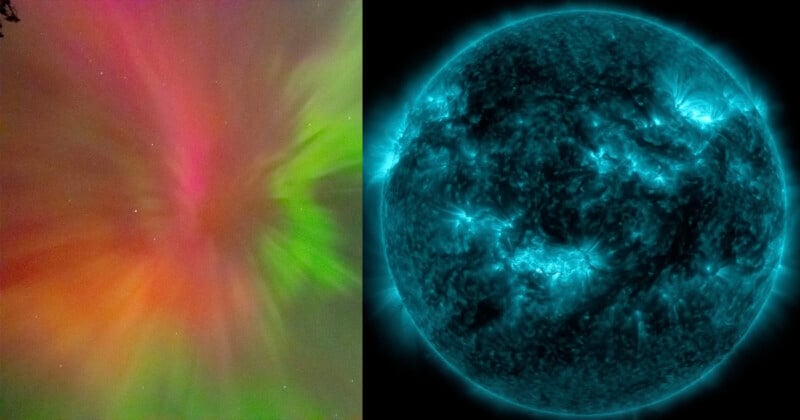NASA Wants Your Photos of the Aurora to Study Space Weather

The many photos taken of the spectacular aurora lights that lit up the skies of North America and Europe last weekend will help NASA study solar storms for years to come.
The Sun’s activity increases and decreases in a solar cycle so it comes as no surprise that right now it is approaching its maximum peak with powerful solar flares emanating from the home star.
Digital Trends reports that even though we are close to maximum activity, this past weekend’s solar storms were far more powerful than what is expected at this point in the cycle. But for NASA, it is a great opportunity to collect data.
“We’ll be studying this event for years,” Teresa Nieves-Chinchilla, acting director of NASA’s Moon to Mars (M2M) Space Weather Analysis Office, says in a statement. “It will help us test the limits of our models and understanding of solar storms.”
The aurora lights that started on May 10 came from a series of solar flares that started on May 3 and carried on until May 9. NASA says its Solar Dynamics Observatory observed 82 notable solar flares in that period. The flares mainly came from two active regions on the Sun called AR 13663 and AR 13664.
It was these solar flares and outbursts of energy called coronal mass ejections that created the widely seen auroras on Earth. Astrophotography enthusiasts and regular people alike were able to capture stunning images of the northern lights — largely because of how far camera sensors have advanced.
“Cameras — even standard cell phone cameras — are much more sensitive to the colors of the aurora than they were in the past,” says Elizabeth MacDonald, NASA heliophysics citizen science lead. “By collecting photos from around the world, we have a huge opportunity to learn more about auroras through citizen science.”
How You Can Help NASA Study Auroras
McDonald wants people to submit reports of what they saw in their region to Aurorasaurus.org. Even people who didn’t see one, NASA are interested in a report from the region they were in.
The space agency says that better data on how solar events influence Earth’s upper atmosphere is crucial to understanding space weather’s impact on satellites, crewed missions, and infrastructure on Earth and in space.
The active regions of the Sun that have been creating the aurora lights are now turning to face away from Earth but there could yet be more solar storms.
“The active region is just starting to come into view of Mars,” says Jamie Favors, director of the NASA Space Weather Program at NASA Headquarters in Washington. “We’re already starting to capture some data at Mars, so this story only continues.”
Image credits: NASA/Mara Johnson-Groh